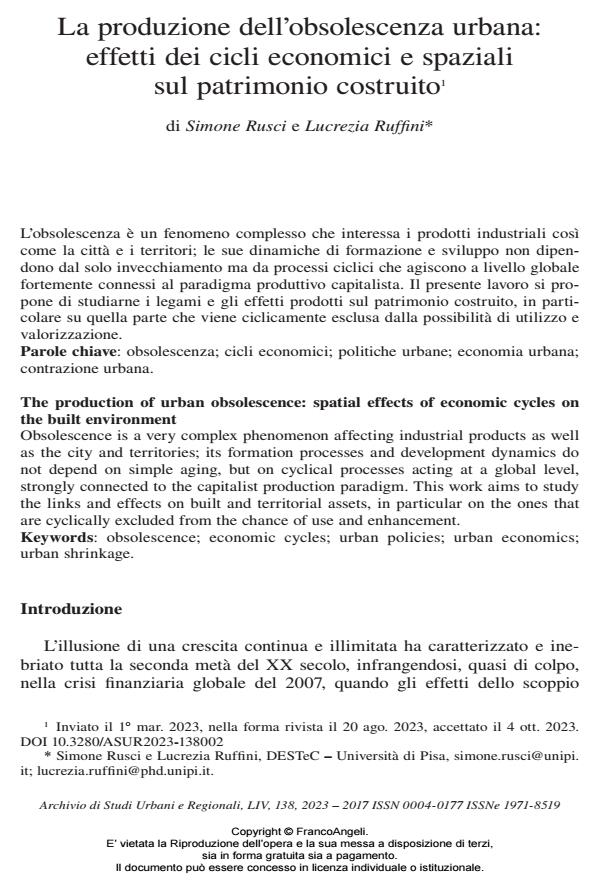The production of urban obsolescence: spatial effects of economic cycles on the built environment
Journal title ARCHIVIO DI STUDI URBANI E REGIONALI
Author/s Simone Rusci, Lucrezia Ruffini
Publishing Year 2024 Issue 2023/138
Language Italian Pages 21 P. 29-49 File size 560 KB
DOI 10.3280/ASUR2023-138002
DOI is like a bar code for intellectual property: to have more infomation
click here
Below, you can see the article first page
If you want to buy this article in PDF format, you can do it, following the instructions to buy download credits

FrancoAngeli is member of Publishers International Linking Association, Inc (PILA), a not-for-profit association which run the CrossRef service enabling links to and from online scholarly content.
Obsolescence is a very complex phenomenon affecting industrial products as well as the city and territories; its formation processes and development dynamics do not depend on simple aging, but on cyclical processes acting at a global level, strongly connected to the capitalist production paradigm. This work aims to study the links and effects on built and territorial assets, in particular on the ones that are cyclically excluded from the chance of use and enhancement.
Keywords: obsolescence; economic cycles; urban policies; urban economics; urban shrinkage.
Simone Rusci, Lucrezia Ruffini, La produzione dell’obsolescenza urbana: effetti dei cicli economici e spaziali sul patrimonio costruito in "ARCHIVIO DI STUDI URBANI E REGIONALI" 138/2023, pp 29-49, DOI: 10.3280/ASUR2023-138002